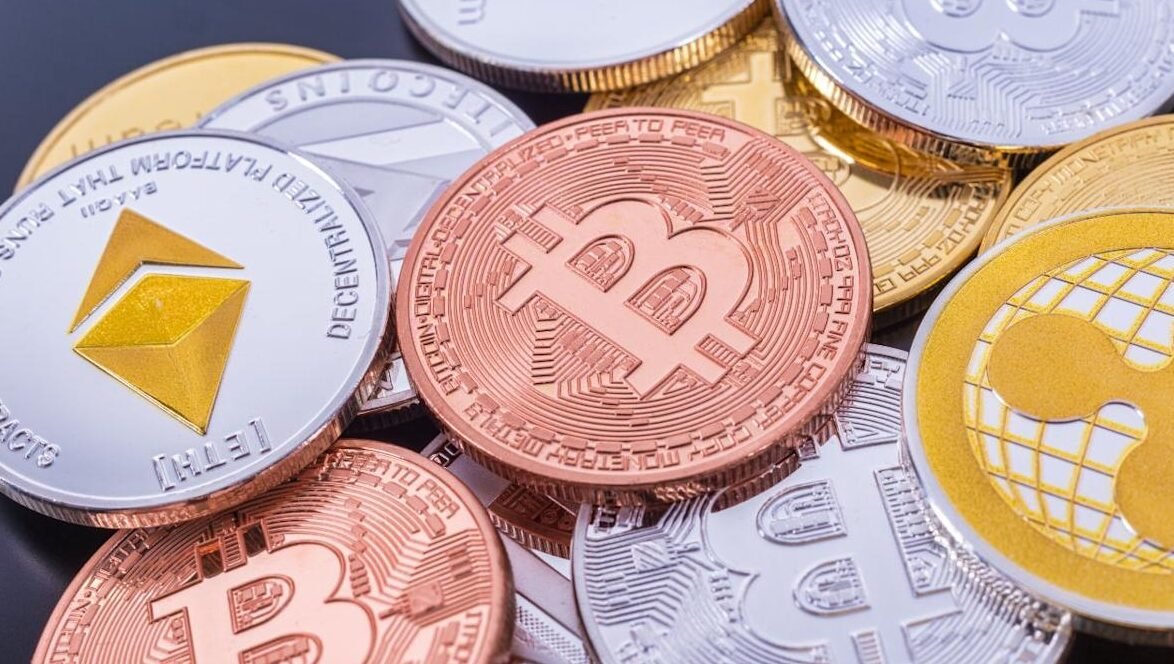The blockchain revolution continues to reshape the global financial landscape, and savvy investors are positioning themselves for the next wave of digital transformation. As we navigate through 2025, identifying the best blockchain investments 2025 offers has become crucial for building a diversified and profitable portfolio. With institutional adoption reaching new heights and innovative blockchain technologies emerging daily, this year presents unprecedented opportunities for both seasoned investors and newcomers to the crypto space.
From established cryptocurrencies to cutting-edge DeFi protocols, the blockchain ecosystem offers various investment vehicles that cater to different risk tolerances and investment goals. This comprehensive guide will explore the most promising blockchain investment opportunities, helping you make informed decisions in an increasingly complex digital asset landscape.
Understanding Blockchain Investment Landscape in 2025
The blockchain investment ecosystem has matured significantly, offering investors multiple avenues to capitalize on this transformative technology. Unlike the early days of cryptocurrency, today’s market provides sophisticated investment products ranging from direct cryptocurrency purchases to blockchain-focused exchange-traded funds (ETFs) and venture capital opportunities.
Institutional adoption has been a driving force behind blockchain’s legitimacy, with major corporations and financial institutions integrating blockchain solutions into their operations. This mainstream acceptance has created a more stable foundation for long-term investment strategies, reducing the extreme volatility that characterized earlier crypto markets.
The regulatory environment has also evolved, providing clearer guidelines for investors and businesses operating in the blockchain space. This regulatory clarity has attracted institutional capital and enabled the development of compliant investment products that meet traditional financial standards.
Market capitalization across blockchain projects has reached new highs, indicating strong investor confidence and adoption. The total value locked (TVL) in decentralized finance (DeFi) protocols continues to grow, demonstrating the practical utility and economic potential of blockchain applications beyond simple value transfer.
Top Cryptocurrency Investments for 2025

Bitcoin: The Digital Gold Standard
Bitcoin remains the cornerstone of any blockchain investment portfolio, often referred to as “digital gold” due to its store-of-value characteristics. With its limited supply of 21 million coins and increasing institutional adoption, Bitcoin continues to serve as a hedge against inflation and economic uncertainty.
The recent approval of Bitcoin ETFs has opened the door for traditional investors to gain exposure to cryptocurrency through familiar investment vehicles. This development has significantly increased Bitcoin’s accessibility and legitimacy among conservative investors who previously avoided direct cryptocurrency ownership.
Bitcoin’s network security and decentralization make it the most trusted blockchain platform, with over a decade of proven reliability. Its first-mover advantage and brand recognition provide significant competitive advantages that newer cryptocurrencies struggle to match.
Ethereum: The Smart Contract Pioneer
Ethereum’s transition to a proof-of-stake consensus mechanism has positioned it as a more sustainable and scalable blockchain platform. This upgrade, known as Ethereum 2.0, has significantly reduced energy consumption while improving transaction throughput and network efficiency.
The Ethereum ecosystem hosts the majority of decentralized applications (dApps), non-fungible tokens (NFTs), and DeFi protocols, making it the backbone of the decentralized web. This network effect creates strong demand for ETH tokens, which are required for transaction fees and smart contract execution.
Layer-2 scaling solutions built on Ethereum have addressed many of its scalability concerns, enabling faster and cheaper transactions while maintaining the security of the main network. These developments have strengthened Ethereum’s position as the preferred platform for blockchain innovation.
Solana: The High-Performance Alternative
Solana has emerged as a leading competitor to Ethereum, offering superior transaction speeds and lower costs. Its unique proof-of-history consensus mechanism enables the network to process thousands of transactions per second, making it attractive for high-frequency applications.
The Solana ecosystem has experienced rapid growth in DeFi and NFT adoption, with numerous projects choosing to build on its platform due to its technical advantages. This growing ecosystem creates network effects that drive demand for SOL tokens.
Despite experiencing some network outages in its early development, Solana has demonstrated resilience and continuous improvement, addressing technical challenges while maintaining its performance advantages.
Best Blockchain Investments 2025: DeFi and Emerging Technologies
Decentralized Finance (DeFi) Protocols
DeFi represents one of the most innovative applications of blockchain technology, recreating traditional financial services without intermediaries. Leading DeFi protocols offer investors opportunities to earn yield through lending, liquidity provision, and yield farming strategies.
Uniswap, the largest decentralized exchange, continues to dominate automated market making with billions in daily trading volume. Its governance token (UNI) provides holders with voting rights and potential fee sharing opportunities as the protocol evolves.
Aave, a leading lending protocol, enables users to earn interest on deposited assets while borrowers pay competitive rates. The protocol’s innovative features, such as flash loans and credit delegation, demonstrate the potential for DeFi to expand beyond traditional banking services.
Compound Finance pioneered the concept of algorithmic money markets, automatically adjusting interest rates based on supply and demand. Its COMP token rewards users for participating in the protocol, creating incentives for growth and adoption.
Layer-2 Scaling Solutions
Layer-2 solutions address blockchain scalability challenges by processing transactions off the main chain while inheriting its security properties. These solutions are becoming increasingly important as blockchain adoption grows and network congestion increases.
Polygon (MATIC) has established itself as the leading Ethereum scaling solution, hosting numerous DeFi and gaming projects. Its proof-of-stake sidechain offers fast, cheap transactions while maintaining compatibility with Ethereum smart contracts.
Arbitrum and Optimism represent the next generation of layer-2 solutions, using optimistic rollup technology to bundle transactions and reduce costs. These platforms are gaining significant traction among developers and users seeking better performance.
Lightning Network continues to evolve as Bitcoin’s primary scaling solution, enabling instant, low-cost payments. Its growing adoption by merchants and payment processors demonstrates the practical utility of layer-2 technologies.
Blockchain Stocks and Traditional Investment Vehicles
Public Companies with Blockchain Exposure
Traditional investors can gain blockchain exposure through publicly traded companies that have significant involvement in cryptocurrency or blockchain technology. These stocks offer a way to invest in blockchain growth while maintaining the familiarity of stock market investing.
MicroStrategy (MSTR) has become synonymous with corporate Bitcoin adoption, holding substantial Bitcoin reserves on its balance sheet. The company’s stock price often correlates strongly with Bitcoin movements, providing leveraged exposure to cryptocurrency price action.
Coinbase Global (COIN), the largest U.S. cryptocurrency exchange, offers investors exposure to the growing crypto trading industry. Its revenue is directly tied to cryptocurrency adoption and trading volumes, making it a play on overall market growth.
NVIDIA Corporation (NVDA) benefits from blockchain mining demand for its graphics processing units (GPUs). The company’s advanced chip technology is essential for cryptocurrency mining and AI applications within blockchain networks.
Blockchain-Focused ETFs
Exchange-traded funds focused on blockchain technology provide diversified exposure to the sector through a single investment vehicle. These ETFs typically hold baskets of blockchain-related stocks and sometimes direct cryptocurrency exposure.
The Global X Blockchain ETF (BKCH) invests in companies involved in blockchain technology development and implementation. Its holdings include software companies, financial institutions, and technology firms with significant blockchain exposure.
Amplify Transformational Data Sharing ETF (BLOK) focuses on companies that develop or use blockchain technology for transformational purposes. The fund provides exposure to both established technology companies and emerging blockchain specialists.
ProShares Bitcoin Strategy ETF (BITO) offers indirect Bitcoin exposure through futures contracts, allowing traditional investors to gain cryptocurrency exposure through their existing brokerage accounts.
Emerging Blockchain Investment Opportunities
Non-Fungible Tokens (NFTs) and Digital Assets
The NFT market has evolved beyond simple digital art, encompassing gaming assets, virtual real estate, and utility tokens. This expansion has created new investment opportunities in digital ownership and creative economies.
Gaming NFTs represent a significant growth area, with play-to-earn games enabling players to earn real value through gameplay. These games create sustainable economies where in-game assets have real-world value and can be traded on open markets.
Virtual real estate in metaverse platforms like Decentraland and The Sandbox has attracted significant investment, with some plots selling for hundreds of thousands of dollars. These investments bet on the future of virtual worlds and digital experiences.
Music and entertainment NFTs provide artists with new monetization models while giving fans unique ownership experiences. This sector continues to innovate with concert tickets, exclusive content, and fan engagement mechanisms.
Web3 and Decentralized Internet
Web3 represents the next evolution of the internet, built on blockchain technology and emphasizing user ownership and decentralization. This paradigm shift creates investment opportunities in infrastructure, applications, and services that enable the decentralized web.
Filecoin (FIL) operates a decentralized storage network that allows users to rent unused storage space and earn tokens. This protocol addresses the need for distributed data storage in a Web3 environment while providing economic incentives for participation.
The Graph (GRT) provides indexing services for blockchain data, enabling developers to build decentralized applications more efficiently. As the number of dApps grows, the demand for reliable data indexing services increases proportionally.
Chainlink (LINK) bridges the gap between blockchain networks and real-world data through its decentralized oracle network. This infrastructure is essential for many DeFi applications and smart contracts that require external data feeds.
Risk Assessment and Investment Strategies
Understanding Blockchain Investment Risks
Blockchain investments carry unique risks that differ from traditional asset classes. Volatility remains a significant concern, with cryptocurrency prices capable of experiencing dramatic swings within short time periods. Regulatory uncertainty continues to create market instability as governments worldwide develop frameworks for digital assets.
Technology risks include smart contract vulnerabilities, network attacks, and protocol failures that could result in permanent loss of funds. The nascent nature of blockchain technology means that even well-established projects may face unexpected technical challenges.
Market manipulation and liquidity risks are particularly relevant in smaller cryptocurrency markets, where large traders can significantly impact prices. Investors should be aware of these dynamics when considering positions in less established projects.
Portfolio Diversification Strategies
Successful blockchain investing requires thoughtful diversification across different types of projects, market capitalizations, and use cases. A balanced approach might include blue-chip cryptocurrencies, emerging altcoins, DeFi tokens, and traditional blockchain stocks.
Geographic diversification can help mitigate regulatory risks, as different countries have varying approaches to cryptocurrency regulation. Investing in projects and companies across multiple jurisdictions reduces exposure to any single regulatory environment.
Time diversification through dollar-cost averaging can help smooth out volatility and reduce the impact of market timing. This strategy involves making regular investments regardless of current market conditions, potentially lowering average purchase prices over time.
Long-Term vs. Short-Term Investment Approaches
Long-term blockchain investing focuses on fundamental technology adoption and network effects. This approach suits investors who believe in the transformative potential of blockchain technology and are willing to hold positions through market cycles.
Short-term trading strategies attempt to capitalize on price volatility and market inefficiencies. These approaches require significant time commitment, technical analysis skills, and risk management expertise to be successful.
Hybrid strategies combine elements of both approaches, maintaining core long-term positions while allocating smaller portions of capital to shorter-term opportunities. This balanced approach allows investors to benefit from long-term trends while potentially capturing shorter-term gains.
Regulatory Landscape and Compliance Considerations

Global Regulatory Developments
The regulatory environment for blockchain investments continues to evolve, with different countries taking varied approaches to cryptocurrency and digital asset oversight. Understanding these regulatory frameworks is crucial for making informed investment decisions and ensuring compliance.
The United States has made significant progress in providing clarity through SEC guidance and the approval of cryptocurrency ETFs. These developments have reduced regulatory uncertainty and enabled traditional financial institutions to offer blockchain investment products to their clients.
European Union’s Markets in Crypto-Assets (MiCA) regulation provides comprehensive framework for cryptocurrency operations within member countries. This regulation offers clarity for investors and businesses while establishing consumer protection measures.
Asia-Pacific regions show mixed approaches, with some countries embracing blockchain innovation while others maintain restrictive policies. Investors should consider these regulatory differences when evaluating international blockchain investment opportunities.
Tax Implications for Blockchain Investments
Cryptocurrency investments are subject to capital gains taxation in most jurisdictions, requiring careful record-keeping and tax planning. Understanding the tax implications of different investment strategies can significantly impact overall returns.
DeFi activities such as yield farming, liquidity provision, and staking may generate taxable events even without selling underlying assets. These activities often require detailed transaction tracking and professional tax advice to ensure compliance.
International investors must navigate complex tax treaties and reporting requirements when investing across borders. Professional tax consultation becomes increasingly important as blockchain investment strategies become more sophisticated.
Future Outlook and Emerging Trends
Institutional Adoption Acceleration
Institutional adoption of blockchain technology continues to accelerate, with major corporations integrating cryptocurrency into their treasury strategies and payment systems. This trend provides fundamental support for blockchain asset prices and reduces overall market volatility.
Central Bank Digital Currencies (CBDCs) represent a significant development that could increase mainstream blockchain adoption while potentially impacting existing cryptocurrency markets. Understanding CBDC developments is important for long-term blockchain investment planning.
Traditional financial institutions are expanding their cryptocurrency services, offering custody, trading, and investment management for digital assets. This infrastructure development makes blockchain investments more accessible to traditional investors.
Technological Innovations on the Horizon
Quantum computing poses both opportunities and challenges for blockchain technology. While quantum computers could potentially threaten current cryptographic methods, they also enable new possibilities for blockchain scalability and functionality.
Interoperability solutions are developing to connect different blockchain networks, potentially creating more efficient and versatile blockchain ecosystems. These developments could significantly impact the relative value of different blockchain platforms.
Artificial intelligence integration with blockchain technology opens new possibilities for automated trading, risk management, and smart contract functionality. These innovations could create entirely new categories of blockchain investment opportunities.
Conclusion
The landscape of blockchain investments in 2025 offers unprecedented opportunities for investors willing to navigate this dynamic and evolving market. From established cryptocurrencies like Bitcoin and Ethereum to innovative DeFi protocols and emerging Web3 technologies, the best blockchain investments 2025 presents span across multiple sectors and risk profiles.
Success in blockchain investing requires thorough research, careful risk management, and a clear understanding of your investment objectives. Whether you choose direct cryptocurrency investments, blockchain stocks, or diversified ETFs, maintaining a balanced approach and staying informed about regulatory developments will be crucial for long-term success.
READ MORE:Best Blockchain Investment Platforms 2025 – Top 10 Reviewed Ranked

















